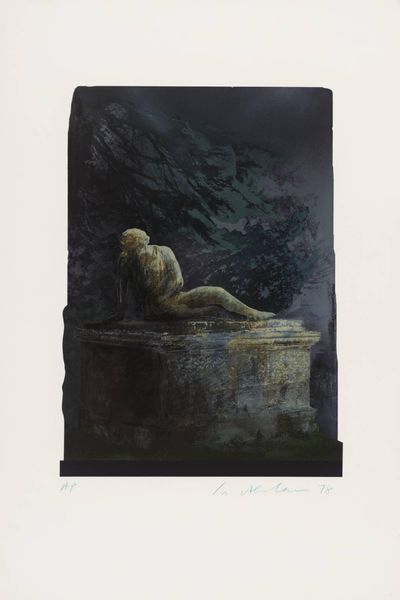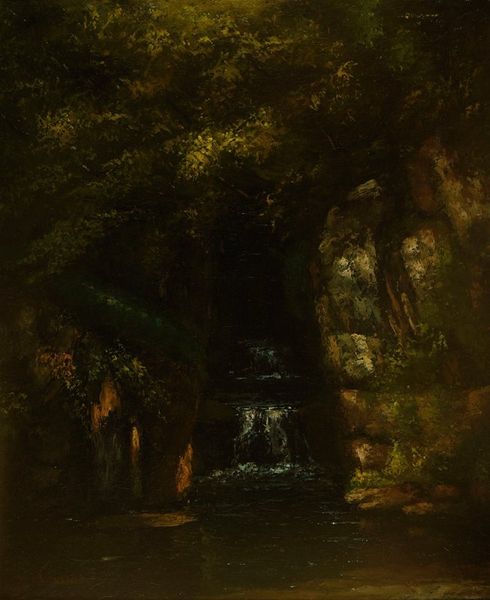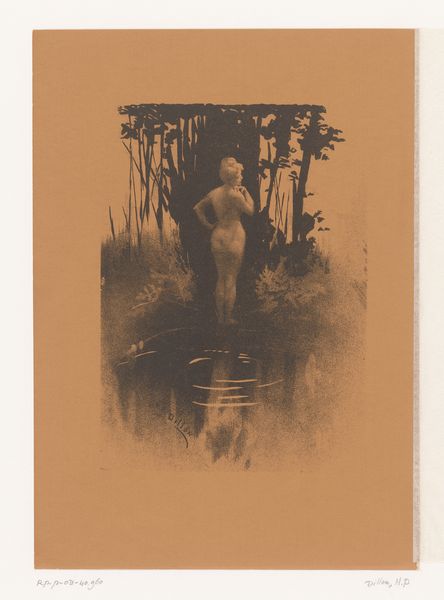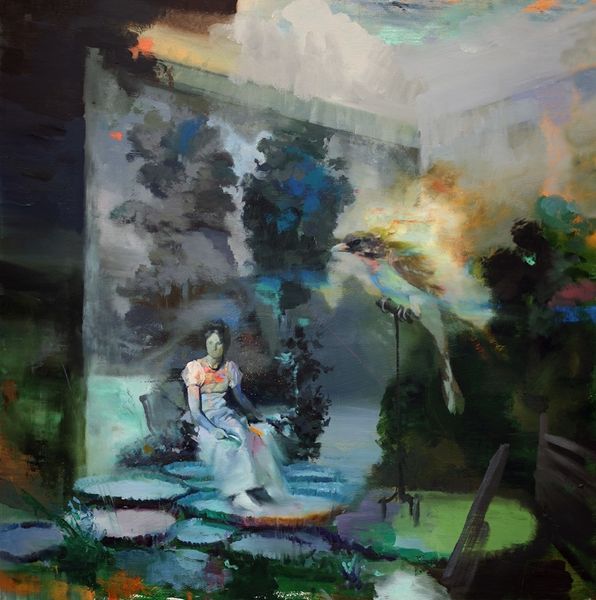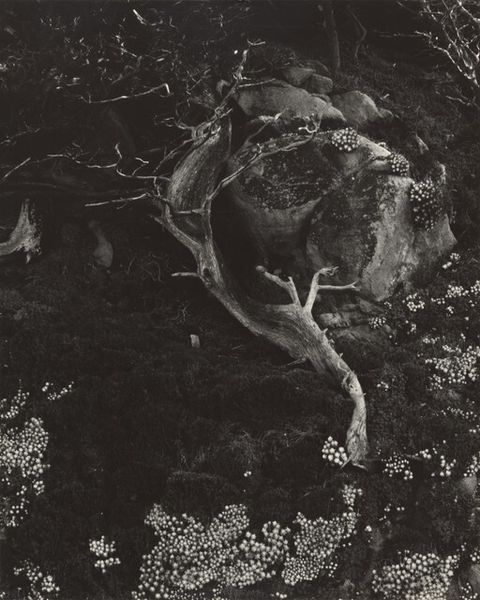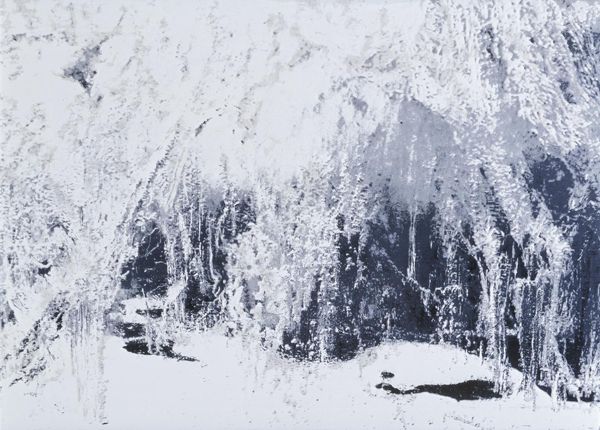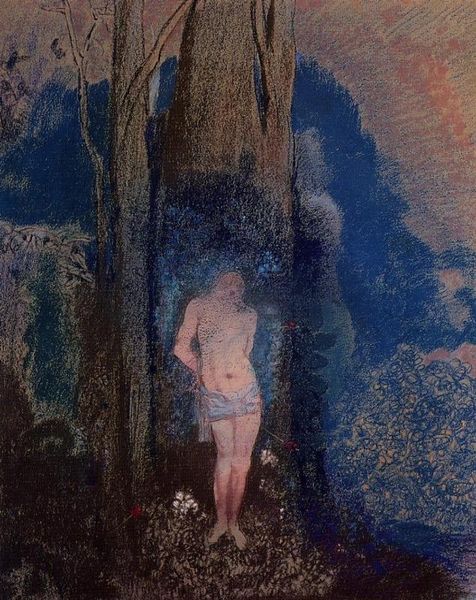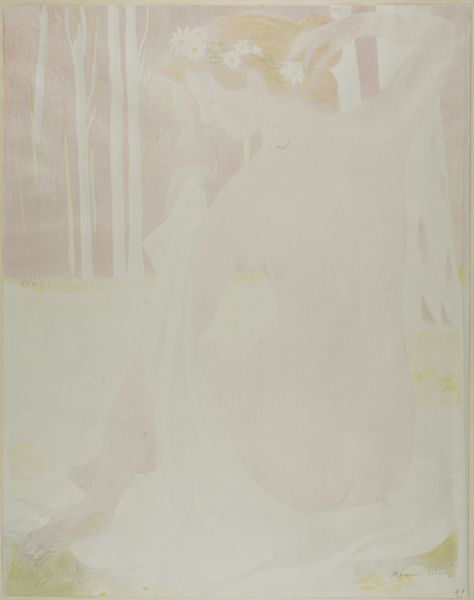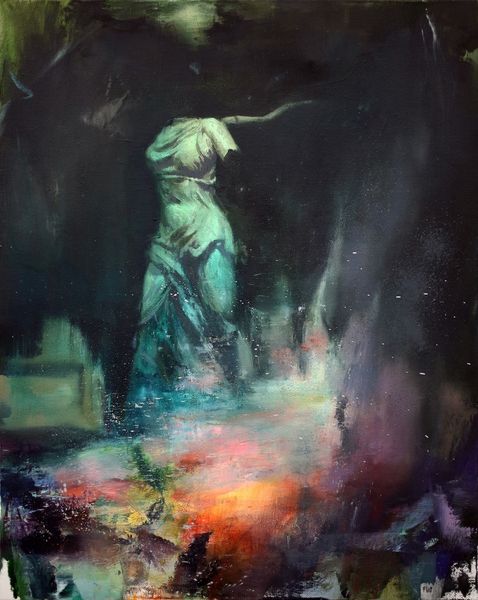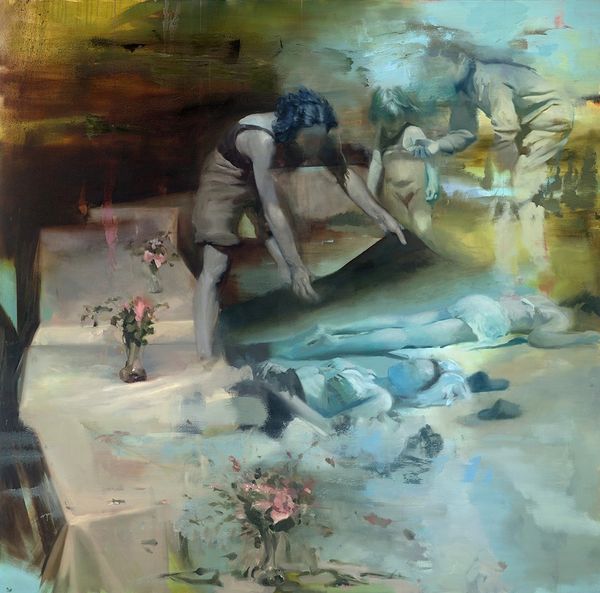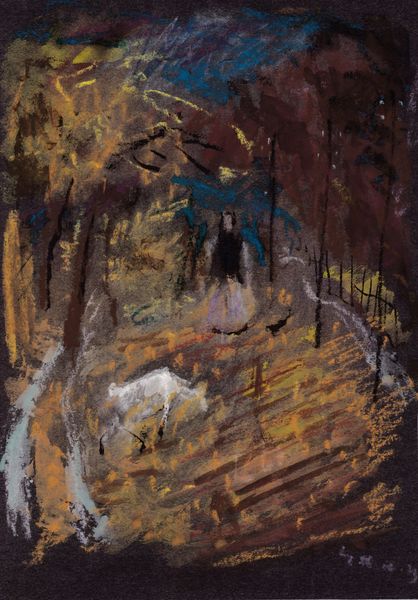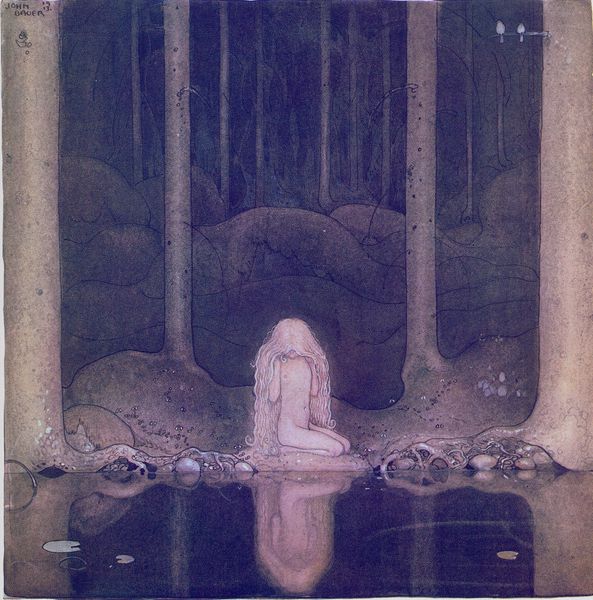
painting, oil-paint
#
mother nature
#
painting
#
oil-paint
#
greek-and-roman-art
#
landscape
#
impressionist landscape
#
figuration
#
classicism
#
history-painting
#
academic-art
#
nude
Copyright: Public Domain: Artvee
Editor: This is Henryk Siemiradzki's "Faun's Pond" painted in 1881, rendered in oil. The statue sort of glows in the subdued, almost theatrical light, doesn't it? What are your initial thoughts when you look at it? Curator: The statue's nudity, juxtaposed with the title "Faun's Pond", hints at classical, perhaps even pagan, origins. I can't help but consider the context of 19th-century academic art, which often idealized the male form. How does this ideal relate to societal power structures of that era? Do you feel a tension between the natural setting and the highly posed sculpture? Editor: That's a great question! I do sense that tension. The landscape seems to be embracing the sculpture. So do you read the "Faun's Pond" more as a painting glorifying classical ideals, or something perhaps subtly critiquing those ideals by showing how they exist artificially? Curator: I think both readings are valid and that’s what makes it interesting. Siemiradzki painted this during a time of immense societal shift and philosophical debates. By evoking a mythological figure and situating him within a carefully constructed scene, he seems to both celebrate a nostalgic past *and* subtly question its relevance to the modern world. It feels like he's holding up a mirror to the societal values of his time, forcing us to consider whose values are being represented. Editor: So it is more complicated than it appears on the surface! Thank you, I'm seeing the painting very differently now. Curator: Absolutely! The key is to never stop questioning the relationships between art, history, and power.
Comments
No comments
Be the first to comment and join the conversation on the ultimate creative platform.
